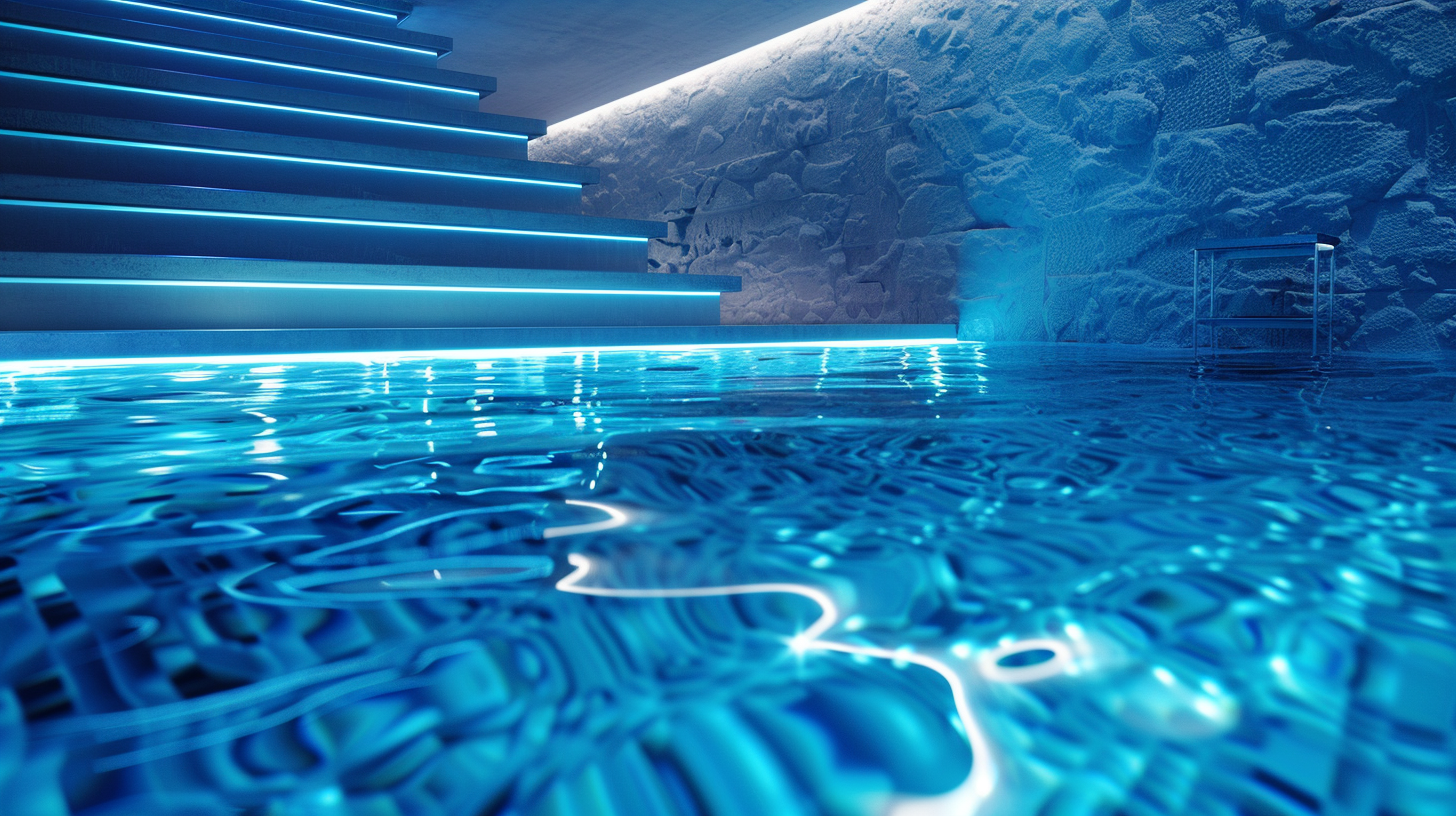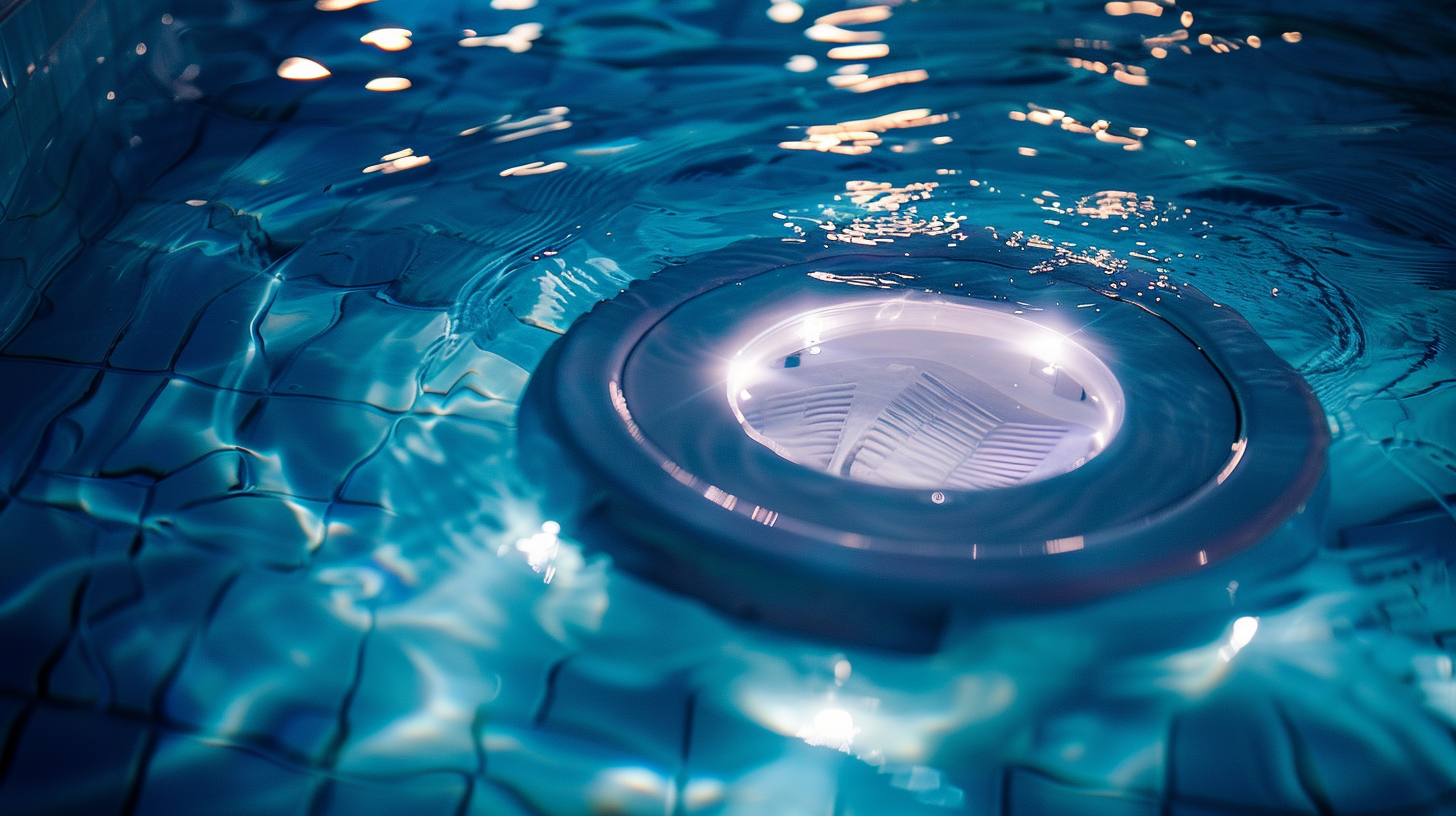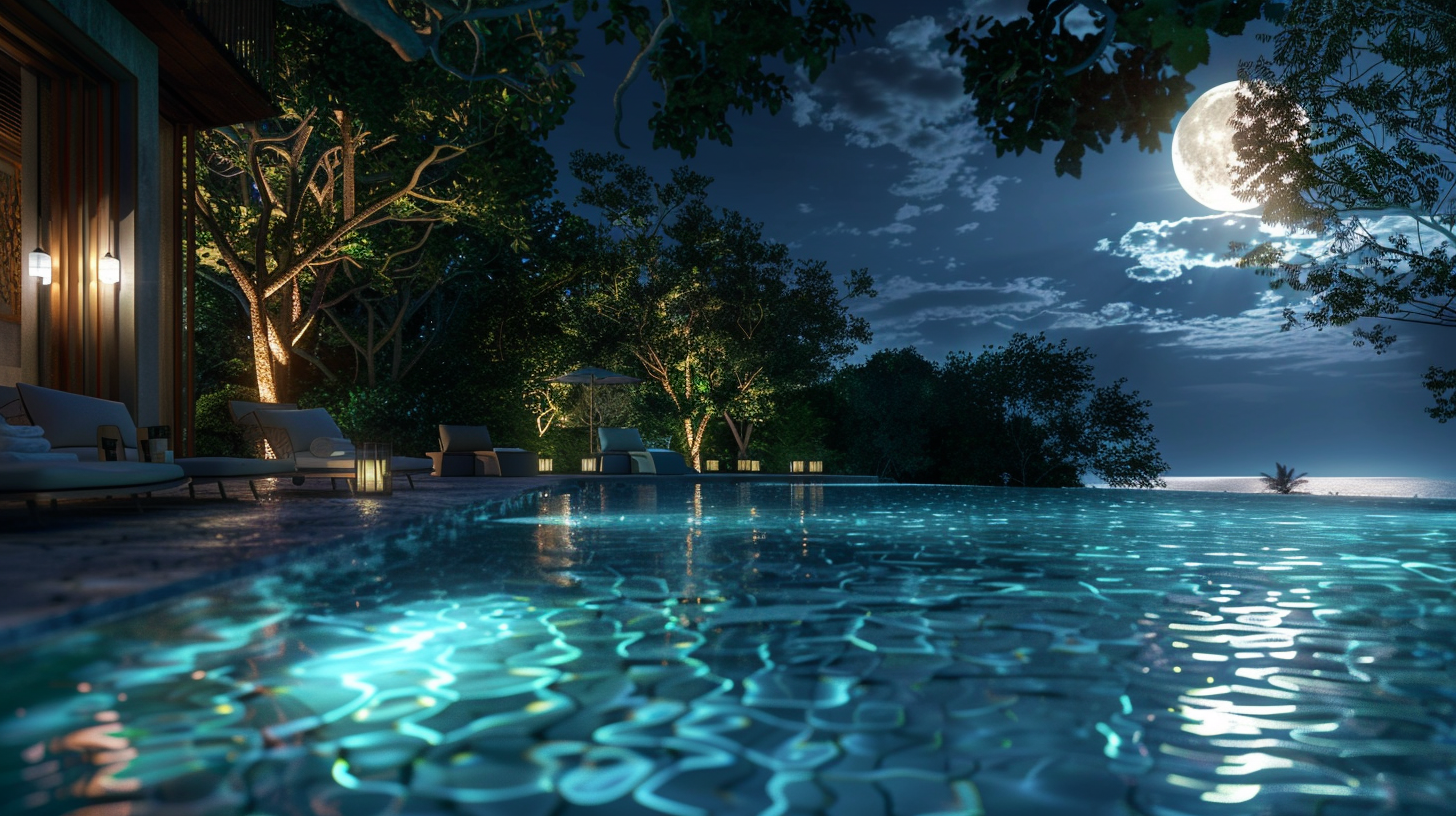The role of underwater pool lights in pool safety
Swimming in a pool during the evening or early morning can be a magical experience, but it is vital to address the inherent challenges associated with low-light conditions. One of the primary roles of underwater pool lights is to significantly enhance visibility. These lights ensure that every part of the pool, from the shallow end to the deep bottom, is well-illuminated, thus making it easier for swimmers to see and be seen.
Proper lighting not only enhances the overall safety of the pool environment but also adds to its aesthetic appeal. When the pool’s underwater depths are brightly lit, it becomes apparent if there are any obstacles, floating debris, or even changes in the pool’s flooring. This minimizes the risk of accidents, such as tripping or hitting submerged objects, which are harder to spot in dim conditions.
Moreover, well-lit pools help lifeguards and supervisors keep a vigilant eye on swimmers. In case of an emergency, quick visual confirmation is key and can make a substantial difference in response times. The clear and illuminated water surface ensures that any signs of distress are immediately noticeable, facilitating prompt and effective rescue efforts.
In essence, the right underwater lighting system can transform your swimming experience, making it not only more enjoyable but also vastly safer for everyone, regardless of the time of day.
Preventing accidents and injuries
When it comes to pool safety, one crucial aspect is the prevention of accidents and injuries. The role of underwater pool lights in this area cannot be overstated. These lights do much more than just illuminate the water; they create an environment where potential hazards are easily visible, thereby significantly reducing the likelihood of mishaps.
Consider a scenario where children are playing in a poorly lit pool. Inadequate lighting can obscure the view of the pool floor, making it difficult to see any obstacles, toys, or changes in depth. This lack of visibility can lead to slips, falls, or collisions, turning a fun activity into a dangerous situation. By ensuring optimal illumination with underwater pool lights, parents and guardians can better monitor the activities of young swimmers, providing a safer environment for play.
Additionally, underwater lighting serves as a critical tool for identifying any unwanted guests in the pool, such as insects or small animals, which could pose a threat. It’s also invaluable for spotting fine cracks or damages in the pool structure that might otherwise go unnoticed. Addressing these issues promptly can prevent more serious accidents and costly repairs down the line.
Another vital safety benefit of underwater pool lights is their ability to guide swimmers towards the pool’s exits and shallow areas, especially during nighttime swims. Well-placed lights can highlight the steps, ladders, and pool edges, making it easier for everyone to safely enter and exit the pool. This guidance is particularly important in emergency situations where a quick and safe evacuation is necessary.
Moreover, in case of a sudden power outage or other unexpected darkening of the pool area, many modern underwater pool lighting systems come with backup battery options. These lights will automatically switch on, providing enough illumination to ensure that everyone can make their way out of the pool safely. This feature highlights the importance of having a reliable, modern lighting system in place.
Incorporating underwater pool lights is not just a matter of enhancing the visual appeal of the pool. Their true role lies in creating a safe swimming environment where the risks of accidents and injuries are minimized, allowing everyone to enjoy the pool with peace of mind.
Key features of safe pool lighting systems
When evaluating the ideal lighting system for your pool, there are several key features that significantly enhance both functionality and safety. One essential aspect to consider is the type of bulbs used in underwater pool lights. LED lights are highly recommended due to their energy efficiency, longevity, and brightness. LEDs provide substantial illumination, ensuring the entire pool area is well-lit, which is crucial for visibility and reducing the risk of accidents.
Another critical feature is the placement and coverage of the lights. Adequate coverage means strategically positioning the lights to eliminate dark spots and shadowed regions within the pool. This ensures consistent lighting across all areas, from the steps and slopes to the deep end, allowing swimmers to navigate the pool more safely. It’s important to consult a professional to determine the optimal placement for maximum illumination.
Durability and waterproof ratings are also paramount when choosing safe pool lighting systems. Lights need to withstand underwater conditions, including pressure changes and exposure to chemicals used in pool maintenance. Opt for lights that are specifically designed for underwater use and have high IP (Ingress Protection) ratings, indicating robust resistance to water and dust ingress. This enhances their longevity and reduces the need for frequent replacements or repairs.
Compatibility with automation systems stands out as another beneficial feature. Modern lighting systems often come with smart functionalities, allowing you to control the lights remotely using a smartphone or a central automation hub. This can be particularly advantageous for adjusting lighting based on the time of day or for creating mood lighting for evening swims, while still maintaining safety standards.
Additionally, consider lighting systems that offer color versatility. While white light is standard for visibility, having the option to switch to different colors can enhance the recreational and aesthetic value of your pool area. However, it’s essential to ensure that any colored lighting used does not compromise overall visibility and safety.
Ease of installation and maintenance is another factor worth noting. Systems that allow for straightforward installation can save time and reduce labor costs. Similarly, lighting solutions that offer easy access for maintenance, such as replaceable lenses and bulbs, can significantly lower long-term upkeep efforts and costs. This ensures that the lights remain in optimal working condition, continually fulfilling their role in enhancing pool safety.
Finally, safety certifications and compliance with local regulations cannot be overlooked. Make sure the lighting system you choose adheres to industry standards and includes safety features like thermal cut-off mechanisms to prevent overheating. Compliance with regulations ensures that your lighting system is not only effective but also legally approved, providing added peace of mind.
The most effective underwater pool lighting systems combine advanced technology, strategic design, and robust safety features. These key components work together to create a well-lit, secure, and enjoyable swimming environment for everyone.
Installation and maintenance best practices
When installing underwater pool lights, several best practices can help ensure optimal performance and longevity while enhancing safety. First and foremost, a thorough assessment of the pool area is essential to determine the appropriate number and placement of lights. Positioning lights strategically can eliminate shadows and dark zones, ensuring the entire pool is uniformly lit. Consulting with a professional lighting installer can provide valuable insights into achieving the best lighting design tailored to your specific pool layout.
One crucial aspect is to ensure proper electrical safety measures during installation. All electrical components and connections should be fully waterproof and comply with local electrical codes and guidelines. Using Ground Fault Circuit Interrupters (GFCIs) is a must, as they protect against electrical shocks by shutting off the power if any electrical imbalance is detected.
Common Lighting Placement Recommendations
| Area | Recommended Placement | Purpose |
|---|---|---|
| Stairs and Ladders | Directly above or below the steps | To highlight entry and exit points |
| Pool Perimeter | Evenly spaced along the edges | To create a well-lit boundary |
| Deep End | Multiple lights at varying depths | To eliminate dark spots |
| Shallow Areas | Near play zones or seating areas | To increase visibility for safer play |
Maintenance is equally critical to ensure that the underwater pool lighting system continues to function effectively and safely. Regular inspections should be conducted to check for any signs of wear and tear, water ingress, or electrical issues. Clean the light fixtures periodically to remove calcium deposits, algae, and other debris that may reduce light output.
Replacing bulbs and components as needed is an integral part of maintenance. Opt for high-quality, energy-efficient LED bulbs, which offer superior longevity and brightness. Always follow the manufacturer’s guidelines for replacing and servicing the lights, as improper handling can compromise safety and performance.
A crucial role in maintaining safety is played by keeping records of all maintenance activities, including inspections and repairs. Documenting these helps in tracking the performance of the lighting system over time and identifying any recurring issues that might require more in-depth troubleshooting.
Finally, educate all pool users about the importance of pool safety concerning underwater lights. Encourage them to report any malfunctioning lights or other issues immediately. Setting up a regular maintenance schedule ensures that the lights remain in top condition, continually fulfilling their role in illuminating the pool area and enhancing safety.
Installing and maintaining underwater pool lights based on these best practices will go a long way in ensuring a safe and enjoyable swimming environment. The right approach combines professional installation, regular upkeep, and diligent monitoring, making sure that the lighting system performs its role effectively throughout its lifespan.
Choosing the right lighting for your pool
Selecting the right lighting for your pool is a crucial aspect that affects both its functionality and aesthetic appeal. When considering underwater pool lights, it’s essential to evaluate the specific needs of your pool’s design and intended use. Start by examining the size and shape of your pool. Larger or irregularly shaped pools may require multiple light sources to ensure comprehensive coverage and eliminate shadowed areas. A well-lit pool not only enhances its visual appeal but also significantly promotes safety for all users.
The choice between LED and halogen lights is also an important factor. LED lights have gained popularity due to their energy efficiency, longer lifespan, and brighter output compared to traditional halogen bulbs. While LEDs might be more expensive initially, their reduced energy consumption and minimal maintenance requirements make them a cost-effective option in the long run. On the other hand, halogen lights can offer a warmer glow but may need more frequent replacements and upkeep.
Another consideration is the color of the lighting. While white lights are the standard for optimal visibility and safety, colored lights can create a unique ambiance for evening swims and poolside gatherings. Many modern lighting systems allow you to switch between colors or even create dynamic lighting effects. However, it’s important to ensure that any colored lighting used does not diminish the overall visibility required for maintaining safety in and around the pool.
It’s also worth considering the type of control systems available. Many contemporary lighting setups come equipped with smart technology, allowing you to control the lights via a smartphone app or a centralized home automation system. This capability can be particularly useful for adjusting lighting levels, scheduling light patterns, and creating specific moods for different occasions, all while ensuring the pool remains safe and well-lit.
In addition to the aesthetic and functional aspects, it’s crucial to consider the lighting system’s durability and resistance to harsh pool conditions. Underwater pool lights should have high waterproof ratings and be constructed from corrosion-resistant materials to withstand prolonged exposure to water and pool chemicals. Investing in high-quality lighting fixtures can save you from frequent replacements and potential safety hazards caused by deteriorated lights.
Lastly, remember to check for industry certifications and compliance with local safety regulations. Certified lighting systems ensure that the products have been tested and meet the necessary safety standards. Features like thermal cut-offs, which prevent overheating, and shock-resistant construction provide added layers of safety, giving you peace of mind knowing that your pool is not only beautiful but also secure.
Choosing the right lighting for your pool involves balancing aesthetic desires with functional and safety needs. By considering the size and shape of your pool, the advantages of LED versus halogen lights, the benefits of color and control options, and ensuring durability and regulatory compliance, you can create a safe and inviting environment that enhances every swimming experience.


